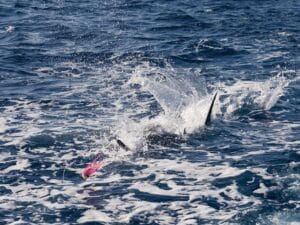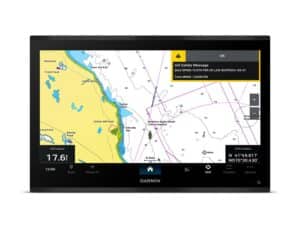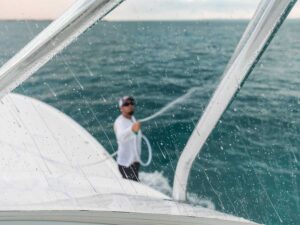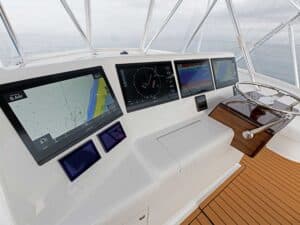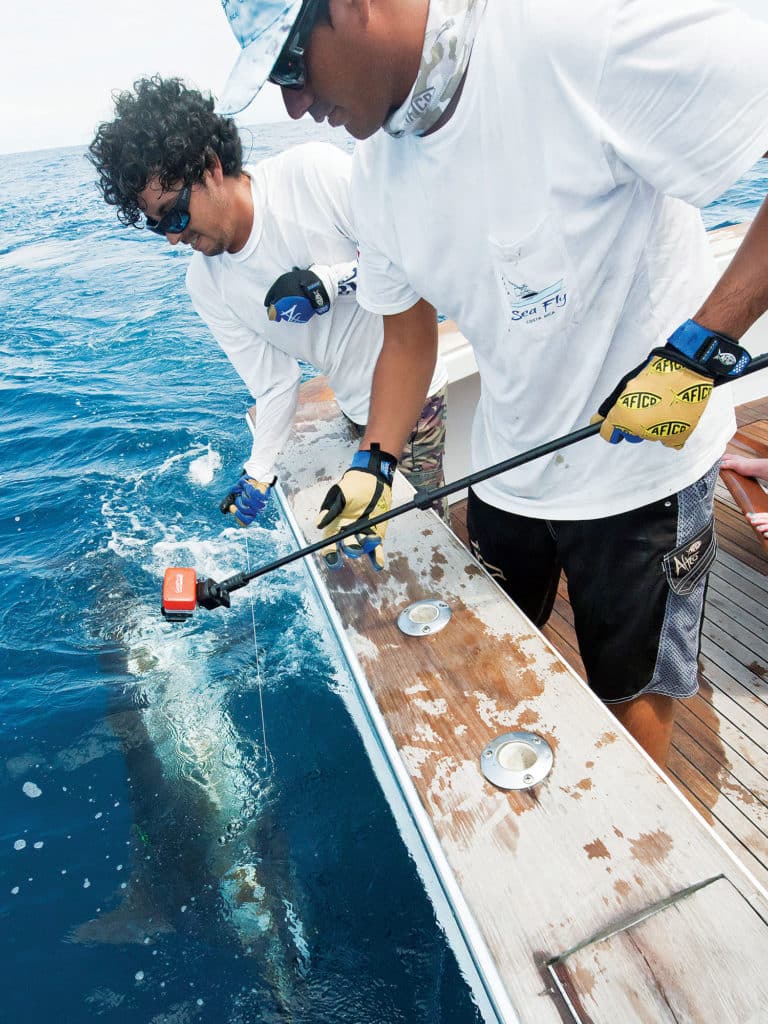
You might already have a POV camera on your boat. We’ve seen battlewagons with several fishing cameras mounted on the bridge, outriggers and fighting chairs, and even some shackled to the end of a tag stick. There are others peering through the transom in through-hull fittings — all of them serving to bring dramatic, fish-fighting action to friends, family and social media fans. You do have a YouTube channel for your vessel, don’t you?
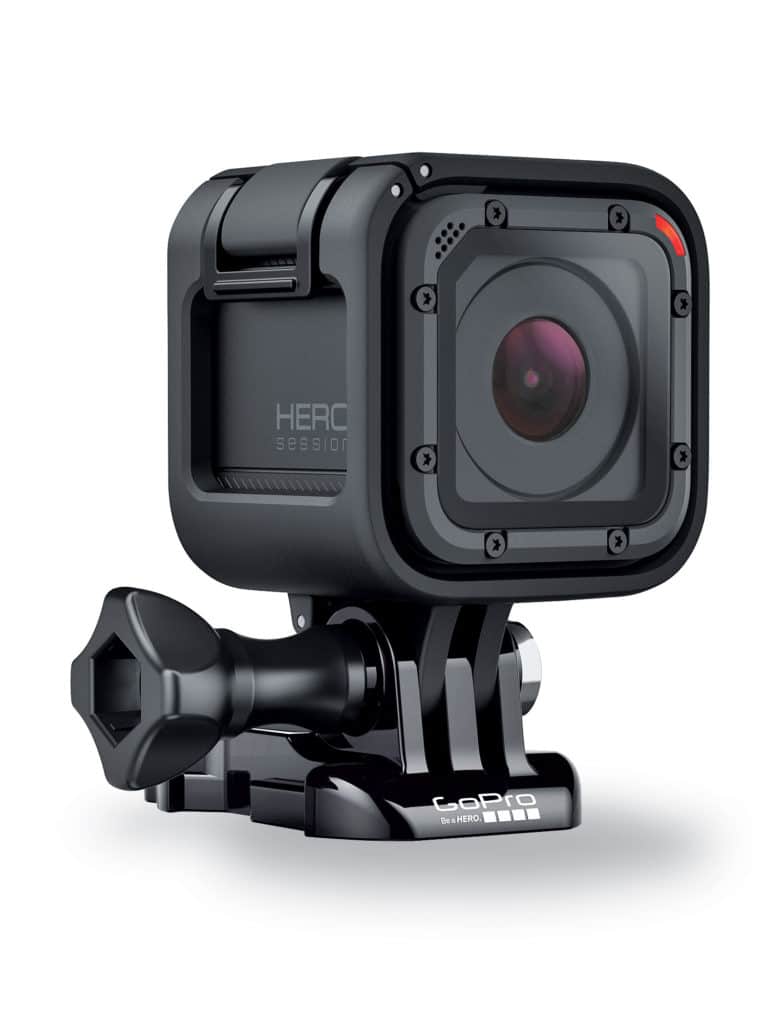
In the Action
Since GoPro popularized POV cameras 14 years ago — yep, 14 years ago — nothing has had a greater impact on how we document our lives, games, sports and fishing like this little camera.
Their new Hero4 boasts the most professional exposure settings available on a comparably priced POV cam, and the Session, their newest and simplest camera model, is fully waterproof, and it’s ready to mount to the tag stick for capturing the tag and release from a brand-new perspective.
Release tournaments increasingly look for documentation of catches. While cameras on phones are ubiquitous, aiming them in the heat of a battle is difficult and perilous. But a POV camera’s lens taking in up to a 180-degree arc of action captures just darned near everything: the fish, the bait in the mouth, the excitement of the crew and angler — even the watchful eye of the skipper at the bridge can be captured in a manner as compelling as a war correspondent’s videography.
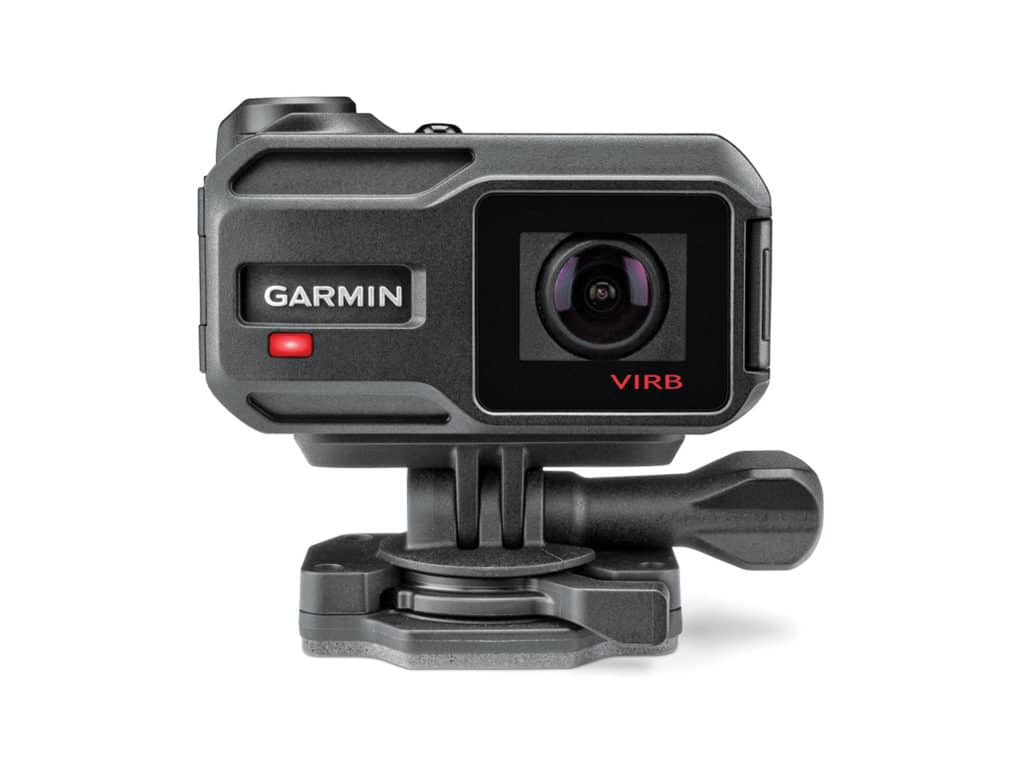
The most common view angle for a POV camera is about 170 degrees. Camera zoom settings narrow it to as low as 140 degrees, but that’s an in-camera crop that results in a lower pixel image. An HD camera is shooting 1080 pixels per inch. A 2K camera is shooting twice that, and 4K video, which is quickly becoming the norm, is over 4000 pixels an inch, creating some shockingly clear video.
Garmin Virb XE is quickly becoming the go-to camera on the water thanks to its connectivity with their Wi-Fi-capable displays, allowing one to view and control them directly from a multifunction display on the helm. They’ll also connect to your smartphone and a separate Bluetooth remote control. They shoot 1080p, not 4K, and Garmin won’t admit they are working on a higher-resolution camera. But the Virb’s ease of operation, integrated waterproof case design and superior sound capture, even when the waterproof case is latched, makes it a killer option to have on board. It uses a ¼-by-20 thread tripod mount adapter, opening up a whole new world of mounts.
Sioeye Iris4G is a camera with cellular connectivity that allows instant streaming of video on a 4G cell network. Offshore, it also streams via Wi-Fi, which is likely already on your battlewagon. A touchscreen gives convenient access to the menus and deactivates streaming; the camera captures video to an SD card. It’s also controllable via any smartphone. It streams in astonishing clarity to your free Sioeye account and links to Facebook and Twitter accounts for near-instant viewing.
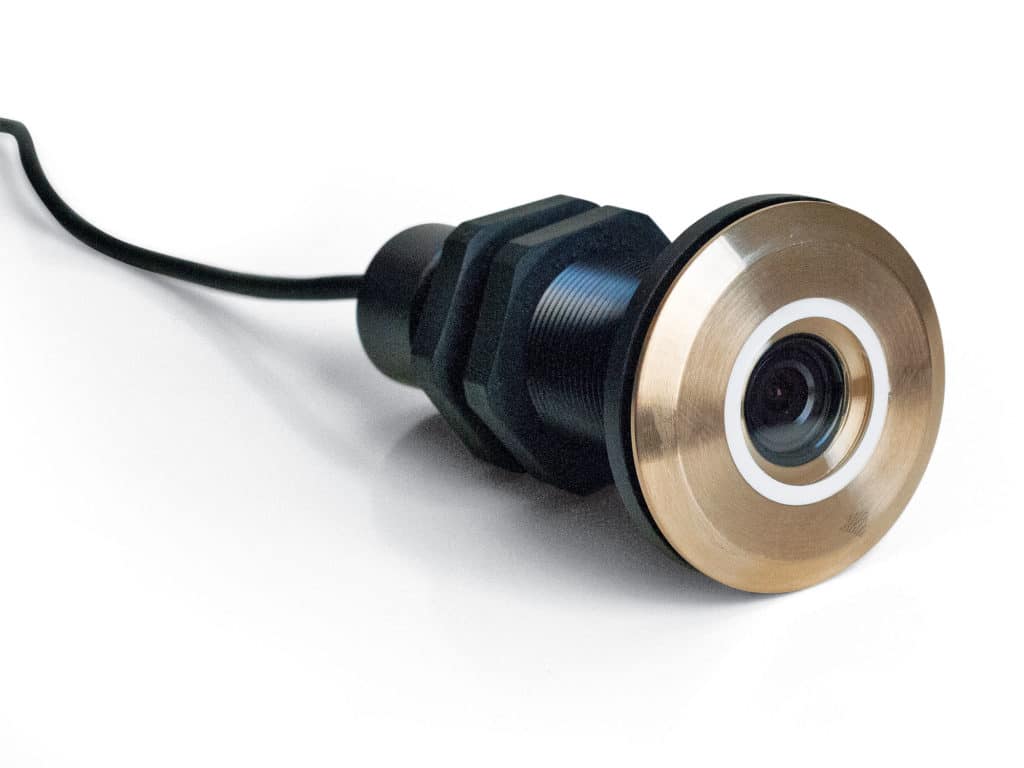
Below the Water
Through-hull cameras fixed in the transom are also a great choice, especially when trying to gain release footage of a billfish that refuses to jump or show itself for a positive species identification. With the right conditions, you can even monitor dredges in real time.
Lumishore EOS can be fixed in the transom, and its proprietary borosilicate glass lens is tough enough to fight off scratches from slashing bills or cleaning. It’s also treated to prevent marine growth for up to a year. Its wide-angle lens shoots in 1080p format with automatic underwater color balance. It can output to your displays via HDMI or composite (RCA-style) connections.
Ocean LED Eyes Gen2 camera shoots from an 82- to 90-degree lens in 720 TV lines, and it transmits to your display via a VGA video cable. You will need to choose between NTSC or PAL formats. Its tritonium lens is scratch-resistant to allow cleaning off growth prior to fishing.
Aqualuma Luma-VU fittings have an acrylic cover that should be treated with Propspeed to slough off growth. Its 92-degree view lens captures 520 TV lines, not HD, but an included video cable allows the camera to transmit video to the display where a screen grab can document the catch.
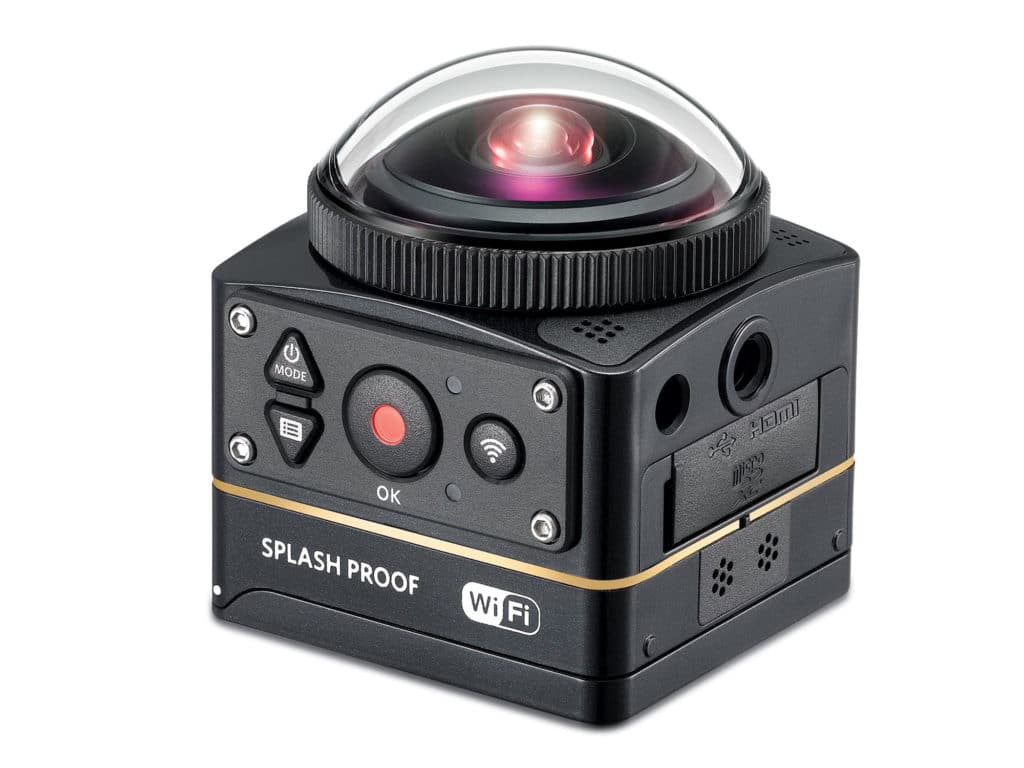
360 Degrees of Action
But thanks to new developments in lens and software systems, standard POV is rapidly becoming passé. You can now shoot video in 360-degree panorama or 180-degree hemispherical or 360-degree spherical format, and these formats are all best shared on YouTube’s new 360-degree channel.
VSN Mobil V360 has a single lens beneath a conical reflector that pulls in everything around it and creates a cylindrical (not spherical) video viewable on an iOS or Android app. It’s waterproof, making it ideal for putting on a tag stick or mounting (it has a ¼-by-20 tripod mount) to an outrigger or hardtop using a clamp-on mount or suction mount just above eye level. Kodak (remember them?) came to the market with a hemispherical PixPro SP360, 180-degree spherical camera last year. It’s splash-resistant on its own and now comes available with a dive case. For on-deck action, mount it above eye level and turn the lens down. For spherical video, buy the dual camera kit that mounts them back to back. They shoot 4K video captured via an f/2.8, 235-degree lens and a nearly half-inch chip.
Ricoh’s Theta S is the hot ticket for spherical video using two back-to-back lenses and smartphone software to process and upload videos to your social accounts. You can view and control the camera via a smartphone app, then download to your phone and edit in a companion app. Sound quality in rushing wind is impressive, thanks to its electronic filtering. The WG-M2 POV is nearly hemispherical, waterproof to 65 feet without a housing, comes with an underwater lens cover and it shoots 4K video at 30 frames per second through its 202-degree lens. The camera is also fully automatic in both photo and video modes, and the professional settings enable experts to fine-tune their images or video. Both models are putting camera makers in catch-up mode.
